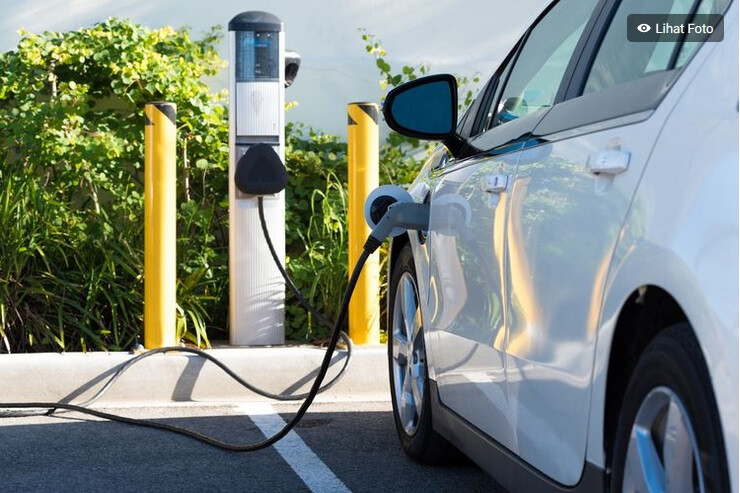
Hanoi, Vietnam - Facing a severe air pollution crisis that ranks it among the worst in Asia, Vietnam is aggressively pursuing green mobility strategies to transition its transportation sector towards sustainability. The government, in collaboration with various ministries and organizations, is implementing a multi-pronged approach that includes promoting clean-fuel vehicles, restricting polluting vehicles in urban centers, investing in public transportation, and developing the necessary infrastructure for electric vehicles.
Recent statistics paint a concerning picture of Vietnam's air quality. The nation currently ranks within the top 10 most polluted countries in Asia and holds the 36th position globally out of 177 countries. A significant contributor to this problem is the transportation sector, which accounts for approximately 18% of Vietnam's total greenhouse gas emissions.
In response to this environmental challenge, the Ministry of Construction has taken a proactive step by issuing a circular that champions the use of green vehicles while aiming to curb the circulation of vehicles failing to meet emission standards within designated low-emission zones. This initiative is a key component of a broader national strategy to combat air pollution and foster sustainable urban mobility.
Further underscoring the national commitment to this cause, a significant campaign titled "Green Transition - Join Hands for a Sustainable Vietnam" was launched on March 28th. This collaborative effort between the Vietnam General Confederation of Labor, the Labor Newspaper, and the Ministry of Agriculture and Environment seeks to raise awareness and encourage public participation in the shift towards a greener future.
Hanoi Spearheads Green Transportation Initiatives
The capital city of Hanoi is at the forefront of this green transportation revolution. Nguyen Dinh Hoa, Deputy Director of the Department of Agriculture and Environment of Hanoi, highlighted the city's intensified investments in air quality monitoring and forecasting systems. Crucially, Hanoi is actively implementing measures to reduce fine dust emissions originating from various sources, including transportation, construction, industrial activities, agriculture, and residential areas.
A significant step being taken by Hanoi is the establishment of low-emission zones. These zones will initially be piloted in the central districts of Hoan Kiem and Ba Dinh, with plans for gradual expansion to other areas. The goal is to restrict the use of polluting vehicles within these zones, thereby significantly improving local air quality.
Furthermore, Hanoi is making substantial strides in developing a modern and sustainable public transport system. These initiatives include the introduction of electric buses, the expansion of urban rail lines, and the creation of dedicated cycling lanes and pedestrian zones. "These measures not only help reduce emissions and improve public health but also contribute to restructuring the city’s transportation system towards a smarter and more convenient model," emphasized Mr. Hoa.
Comprehensive Strategies and Supportive Policies Underway
From a policy and management perspective, Nguyen Huu Tien, Deputy Director of the Department of Science, Technology, Environment, and Building Materials (Ministry of Construction), stressed that a successful transition to green vehicles requires a holistic approach. This includes not only economic incentives but also significant investments in infrastructure development, public awareness campaigns, and fostering behavioral change among the population.
The Ministry of Construction has already introduced regulations designed to create a favorable operating environment for low-emission vehicles within designated zones while simultaneously restricting the movement of high-emission vehicles in these areas.
In parallel, the Ministry of Agriculture and Environment is tightening emission standards for newly assembled vehicles, setting more stringent benchmarks to control pollution right from the manufacturing stage.
Recognizing the critical role of charging infrastructure for electric vehicles, the Ministry of Industry and Trade is actively drafting policies on electricity pricing for charging stations under government directives. This is seen as a vital step in encouraging the widespread adoption of electric vehicles.
The Department of Science, Technology, Environment, and Building Materials is also collaborating with various agencies to develop specific standards for electric vehicle charging stations at key locations such as rest stops, bus terminals, and within urban areas. A key objective is to minimize charging times, thereby enhancing the practicality and convenience of electric vehicles.
Looking ahead, the Ministry of Construction plans to systematically integrate public transport infrastructure, particularly urban rail lines, into urban planning initiatives. The overarching goal is to encourage a shift in people's commuting habits, moving away from private vehicles towards more sustainable public transportation options.
Mr. Tien also emphasized the crucial role of manufacturers in this transition. "Manufacturers need to play a more active role, not only by advancing technology but also by clearly communicating the quality, durability, and safety features of electric vehicles to dispel public concerns," he stated.
Vietnam's proactive and multi-faceted approach signals a strong commitment to tackling its air pollution crisis and building a more sustainable future for its urban centers. The success of these initiatives will be crucial in improving public health and mitigating the environmental impact of the transportation sector in the years to come.
[Copyright (c) Global Economic Times. All Rights Reserved.]



























